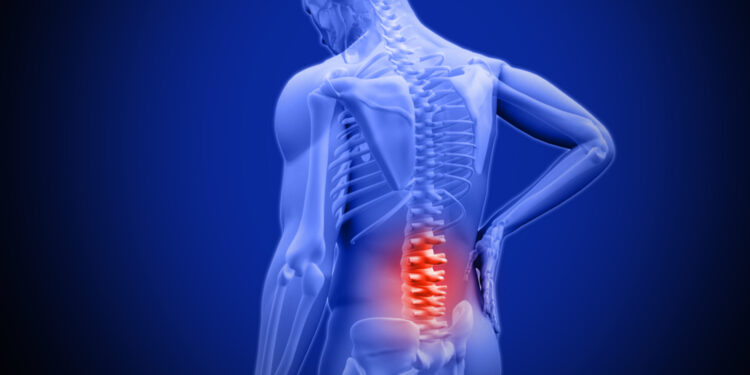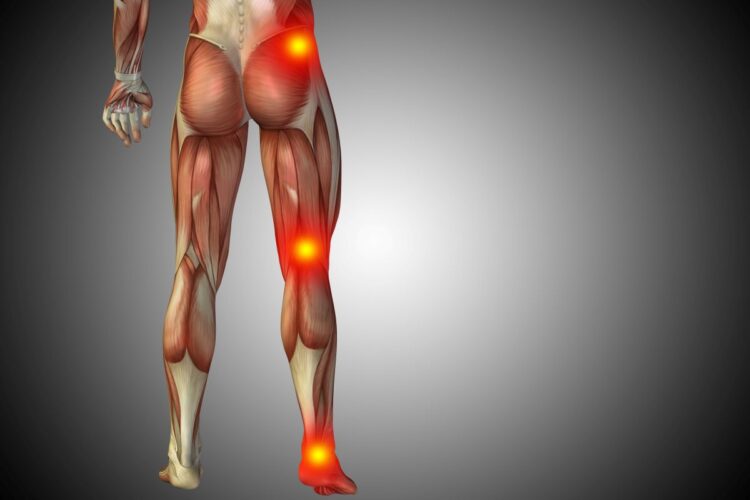We all used to feel back pain even though we didn’t have any injuries. Research has shown that almost 50% of people suffer from back pain during their lifetime, which is not a negligible number. This pain often occurs on its own, but it can often indicate serious things. In any case, it is not something you should ignore, because the back or spine are the carriers of the whole body.
A healthy spine is the foundation of our overall health. It is a support for the head, shoulders, and entire upper body. The spine participates in our upright posture and gives the flexibility to forward movements and sideways rotations.
Pain is generally divided into acute and chronic, and what distinguishes them is the duration. Namely, acute pain is any that lasts up to one and a half months, while chronic pain is considered to be longer.

Source: susquehannahealth.org
At the beginning of the disease, the so-called myofascial pain. They occur due to inflammation and cramps in numerous soft tissues, e.g. muscles, ligaments, joint capsules, and attachments of these structures. The disease can also begin in various rheumatic diseases or after injuries. Spinal cord problems are common in diseases that attack a large number of organs, e.g. systemic autoimmune diseases, osteoporosis, some blood diseases, malignant diseases, diseases that lead to the reduced movement for a long time, etc. Many diseases of the surrounding organs can cause pain that mimics spinal diseases. The above diseases are usually not treated neurosurgical.
Many symptoms will point out something is wrong with your lower back, and here are some of them.
Page Contents
1. Inability to control bladder
It often happens that people have problems controlling their physiological needs without even knowing that it may be a spinal cord entrapment. Sometimes, there is no other way but to resolve such a problem by an urgent medical procedure. Learn more on https://allspinesurgerycenter.com.
2. Pain during the night

Source: orofinophysicaltherapy.com
Most back pain can be relieved by changing your sleeping position. But if looking for such a position becomes an impossible mission or the pain occurs as soon as you lie down or then intensifies, it is time to visit a doctor because it could be the first sign of a spinal cord tumor or infection.
3. Inability to locate the pain
Pain in the upper or lower back that appears to be unrelated to a particular muscle can be a sign of a heart attack, especially if it started in the chest and then spread further, experts say. Sudden and severe pain is a reason to call a doctor, and if the pain is accompanied by jaw pain, nausea, fatigue, and shortness of breath, go to the hospital immediately.
4. A terrible morning stiffness
The pain in the morning is sometimes normal, but if it is getting worse after half an hour, you may have spondylitis. It is a connective tissue disease in which inflammation of the spine and joints occurs, leading to stiffness and pain, which is something you should not ignore.
5. Pain descending to the legs

Source: ascendphysio.com.au
If your disc herniation is in the lower back, you will usually feel the most intense pain in the gluteus, thigh, or lower leg. It can also cover part of the foot. If your disc is a hernia in the neck, the pain will be most intense in the shoulder and arm. This pain can “flash” in your arm or leg when you cough, sneeze or move your spine to a certain position.
6. You already have a high risk of fractures
If you have recently had an accident or have been diagnosed with osteoporosis or osteopenia, back pain should not be ignored. You may have a fracture of the spine, which can lead to loss of height, hunched over, and even problems with breathing and digestion. You may need a back belt, pills, and physical therapy
Several different medical conditions are associated with back pain, but what is characteristic of all of them is the direct connection with the spine or the tissues that surround it. The reason for this is the very nature of the spine and back, and their role in our body, which includes support for the very sensitive spinal cord and nerve roots, but also the complete mobility that our body needs for smooth movement.
Doctors often warn their patients not to classify the severity of back pain based on the intensity of the pain. For example, a simple sprain of the back muscle, which disappears within a few days with home treatment, can cause very intense pain, while a serious problem with some of the spinal discs will act as a mild disturbance, although it requires far more serious treatment, sometimes surgery.
In any case, back pain should not be ignored, especially if it is a constant disturbance that bothers you for a long period.
How to act preventively

Source: prevention.com
Most people with long-term back pain experience emotional and psychological problems they have never encountered before and do not know how to deal with them. If your condition is unlikely to improve with further treatment, seek help on how to deal with long-term pain. Be realistic and don’t indulge in disappointment or a sense of failure.
If the pain doesn’t go away, try to reduce the impact on your life and try to find a way to alleviate it. Treatments that help cope with the pain are only successful when you are actively involved. Techniques like meditation and relaxation can teach you how to master thought and behavior patterns that harm you and how to embrace a new lifestyle.
What can alleviate or prevent the occurrence of back pain are proper breathing, wearing shoes with firm and elastic soles, a healthy diet, as well as the recommended daily water intake. Also, it is important to get rid of bad life habits such as alcohol and cigarette consumption. Another very important thing is to sleep in the correct position because that way you are resting your spine.
Final thoughts
We can often hear that health is the most important thing in the world. And it is, because if you don’t have it, what good is money and everything else when you’re not in a position to use it? So, stay healthy, live healthier, take small steps and prolong your life!





